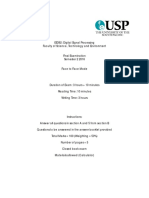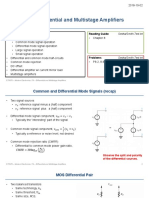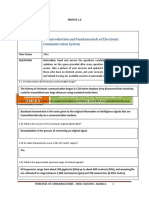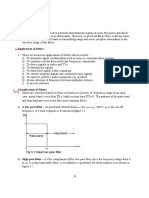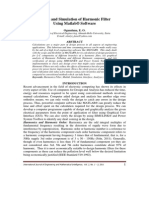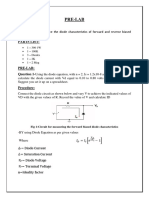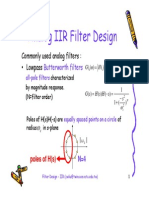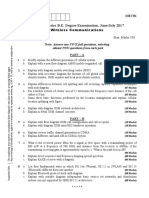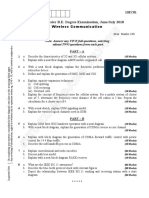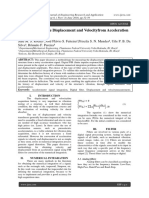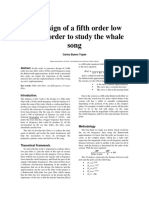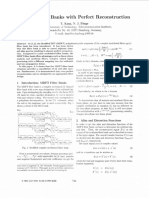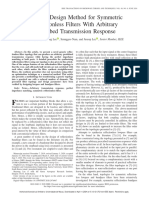100% found this document useful (1 vote)
185 views16 pagesDSP Module 4 Notes
Commonly used analog filters include lowpass Butterworth and Chebyshev filters. Butterworth filters have a maximally flat passband, while Chebyshev filters have ripple in the passband but are steeper in the transition band. Analog filters can be transformed to different frequency bands using transformations like replacing s with ωc/s. Analog filters can be converted to digital filters using methods like converting the differential equation to a difference equation or converting the impulse response. The bilinear transform avoids aliasing by mapping the entire jw-axis to the unit circle but introduces nonlinear frequency warping. Commercial software like Matlab includes functions for designing common IIR digital filters based on analog prototypes.
Uploaded by
Chetan Naik massandCopyright
© © All Rights Reserved
We take content rights seriously. If you suspect this is your content, claim it here.
Available Formats
Download as PDF, TXT or read online on Scribd
100% found this document useful (1 vote)
185 views16 pagesDSP Module 4 Notes
Commonly used analog filters include lowpass Butterworth and Chebyshev filters. Butterworth filters have a maximally flat passband, while Chebyshev filters have ripple in the passband but are steeper in the transition band. Analog filters can be transformed to different frequency bands using transformations like replacing s with ωc/s. Analog filters can be converted to digital filters using methods like converting the differential equation to a difference equation or converting the impulse response. The bilinear transform avoids aliasing by mapping the entire jw-axis to the unit circle but introduces nonlinear frequency warping. Commercial software like Matlab includes functions for designing common IIR digital filters based on analog prototypes.
Uploaded by
Chetan Naik massandCopyright
© © All Rights Reserved
We take content rights seriously. If you suspect this is your content, claim it here.
Available Formats
Download as PDF, TXT or read online on Scribd
/ 16



